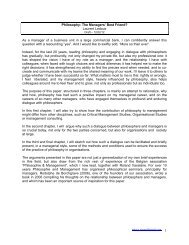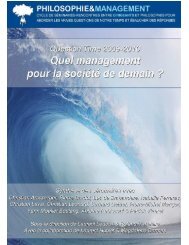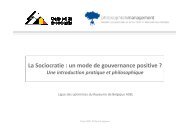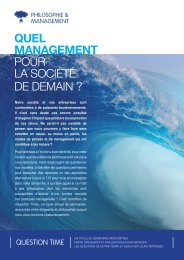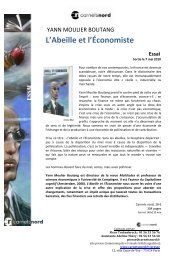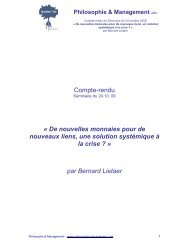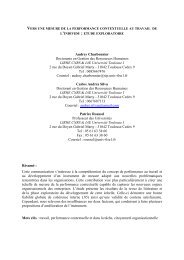The $100 billion question - Signal Lake Venture Fund
The $100 billion question - Signal Lake Venture Fund
The $100 billion question - Signal Lake Venture Fund
Create successful ePaper yourself
Turn your PDF publications into a flip-book with our unique Google optimized e-Paper software.
exogenous, even these events have been shown to occur more frequently than a normal<br />
distribution would imply. 24 God’s distribution has fat tails.<br />
Tail risk within financial systems is not determined by God but by man; it is not exogenous but<br />
endogenous. This has important implications for regulatory control. Finance theory tells us that<br />
risk brings return. So there are natural incentives within the financial system to generate tail risk<br />
and to avoid regulatory control. In the run-up to this crisis, examples of such risk-hunting and<br />
regulatory arbitrage were legion. <strong>The</strong>y included escalating leverage, increased trading portfolios<br />
and the design of tail-heavy financial instruments. 25<br />
<strong>The</strong> endogeneity of tail risk in banking poses a dilemma for regulation. Putting uncertainties to<br />
one side, assume the policymaker could calibrate perfectly tail risk in the system today and the<br />
capital necessary to insure against it. In an echo of the 1979 Madness song, banks would then<br />
have incentives to position themselves “One Step Beyond” the regulatory buffer to harvest the<br />
higher returns that come from assuming tail risk. <strong>The</strong>y do so safe in the knowledge that the state<br />
will assume some of this risk if it materialises. Tail risk would expand to exhaust available<br />
resources. Countless crises have testified to this dynamic.<br />
This dynamic means it is hazardous to believe there is a magic number for regulatory ratios<br />
sufficient to insure against tail risk in all states of the world. Because tail risk is created not<br />
endowed, calibrating a capital ratio for all seasons is likely to be, quite literally, pointless –<br />
whatever today’s optimal regulatory point, risk incentives mean that tomorrow’s is sure to be<br />
different.<br />
In response, some economists have proposed corner solutions to the systemic risk problem – in<br />
effect, radical structural redesign. Starting with Irving Fisher in the 1930s, some have proposed<br />
narrow banks with a 100% liquid asset ratio to protect the liquidity services banks provide. 26<br />
Others have proposed mutual fund banks with a 100% equity ratio to safeguard banks’ solvency. 27<br />
<strong>The</strong>se limiting solutions are proof to risk incentives. <strong>The</strong> one guaranteed safe hiding place for the<br />
risk-fearing policymaker is the corner.<br />
One criticism of these proposals is that they might raise materially the cost of capital to banks and<br />
hence to the real economy. For example, 100% capital ratios could cause the economy-wide cost<br />
_____________________________________________________________________________<br />
24<br />
Korup and Clague (2009).<br />
25<br />
Haldane (2009a) discusses some of these strategies in greater detail and the payoffs they generate.<br />
26<br />
Kay (op.cit.)<br />
27<br />
Kotlikoff (2010).<br />
15



